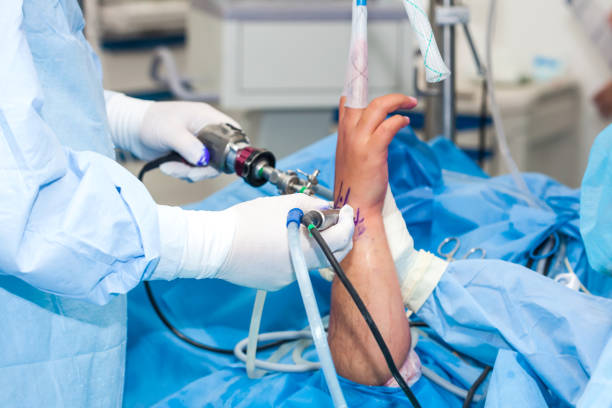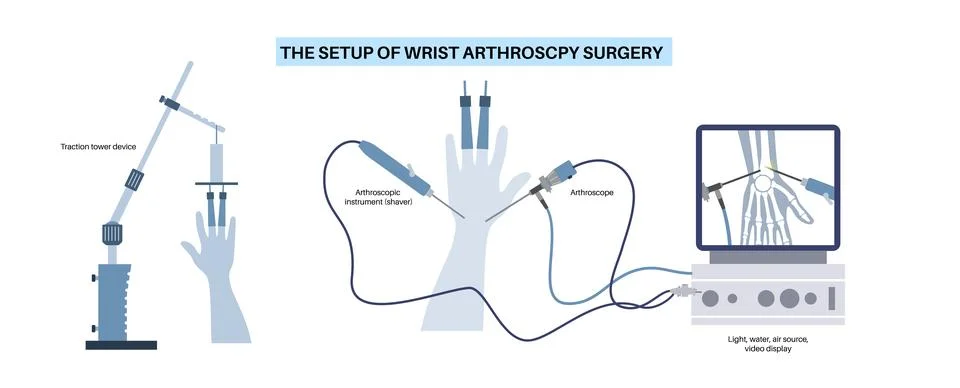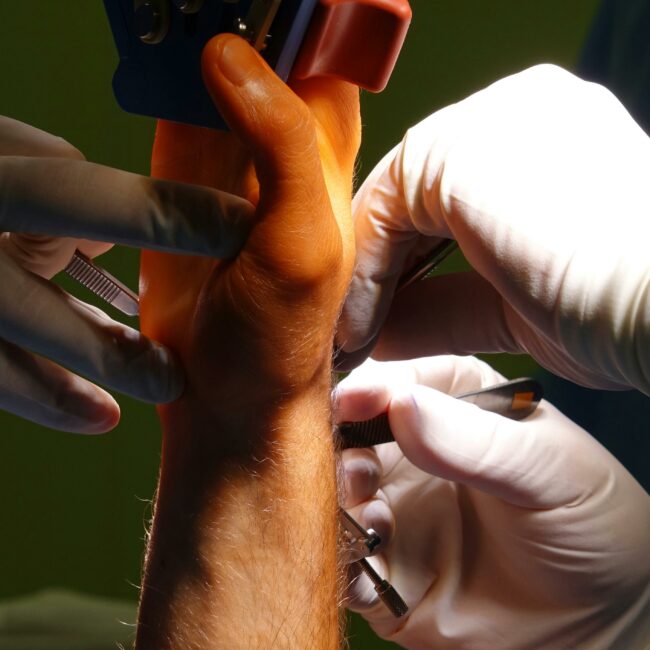
Wrist Arthroscopy: Minimally Invasive Surgical Techniques Explained
The wrist is a complex joint that plays a crucial role in daily activities, from gripping objects to fine motor skills. When wrist pain or dysfunction arises due to injury, degeneration, or instability, surgical intervention may be necessary. Fortunately, wrist arthroscopy offers a less invasive, highly effective option for both diagnosing and treating a wide range of wrist conditions.
In this article, we will explain how wrist arthroscopy works, the role of minimally invasive surgical techniques in wrist care, and how advanced surgical techniques can significantly improve recovery times and patient outcomes.
What is Wrist Arthroscopy?
Wrist arthroscopy is a minimally invasive procedure that allows surgeons to view the inside of the wrist joint using a small camera called an arthroscope. This technique uses small incisions—typically around 2 to 3 mm—through which the arthroscope and specialised surgical instruments are inserted.

Unlike traditional open wrist surgery, wrist arthroscopy provides direct visualisation of the joint structures without the need for large incisions or significant disruption to surrounding tissues.
Conditions Treated with Wrist Arthroscopy
Wrist arthroscopy is commonly used to diagnose and treat a range of conditions, including:
- Ligament injuries (e.g., TFCC tears, scapholunate ligament injuries)
- Wrist fractures requiring internal fixation
- Cartilage injuries
- Chronic wrist pain without a clear diagnosis
- Ganglion cyst removal
- Synovitis or inflammation inside the joint
- Loose bodies or debris within the wrist joint
For both acute injuries and degenerative conditions, minimally invasive surgical techniques offer a solution that is precise, effective, and patient-friendly.
The Benefits of Minimally Invasive Surgical Techniques in Wrist Arthroscopy
1. Smaller Incisions and Less Tissue Damage
Because wrist arthroscopy uses small incisions, there is less trauma to soft tissues and surrounding structures compared to open surgery.
2. Faster Recovery Time
Patients undergoing wrist arthroscopy typically experience a shorter recovery period and reduced post-operative pain. Most can resume light activities within a few weeks.
3. Lower Risk of Complications
Minimally invasive techniques lower the chances of infection, stiffness, and wound-related issues.
4. Enhanced Diagnostic Accuracy
An arthroscope provides surgeons with high-definition visuals of the wrist’s internal structures, making it easier to identify subtle injuries that may be missed on imaging studies like X-rays or MRIs.
How Wrist Arthroscopy is Performed
Step 1: Anaesthesia
The procedure is usually done under local, regional, or general anaesthesia depending on the complexity.
Step 2: Small Incisions
The surgeon makes tiny portals (incisions) on the wrist’s back or sides to access the joint.
Step 3: Insertion of the Arthroscope
A camera is inserted to transmit clear images to a screen, allowing the surgeon to inspect ligaments, cartilage, and joint surfaces.
Step 4: Treatment
Through additional small incisions, advanced surgical techniques such as debridement, repair of ligaments, or removal of loose bodies are carried out.
Step 5: Closure
The incisions are closed with a few sutures, and a bandage or splint is applied.
Advanced Surgical Techniques in Wrist Arthroscopy
Today’s advanced surgical techniques include:
- Ligament Reconstruction: Repairing or reconstructing torn wrist ligaments using small suture anchors or grafts.
- Cartilage Regeneration: Techniques like microfracture to stimulate cartilage repair.
- Debridement: Removing inflamed tissue or loose cartilage causing joint irritation.
- Ganglion Cyst Excision: Removing cysts arthroscopically with minimal disruption to adjacent structures.
These innovations improve the precision of surgery, reduce trauma, and often lead to faster functional recovery.
Recovery After Wrist Arthroscopy
While individual recovery will depend on the procedure performed, general expectations include:
Week 1-2:
- Mild discomfort managed with ice and prescribed medications
- Gentle finger and elbow exercises to prevent stiffness
- Use of a splint or bandage for protection
Week 3-6:
- Progression to active wrist mobilisation under supervision
- Gradual return to light activities (e.g., office work)
After 6 Weeks:
- Start of strength-building exercises
- Return to sports or manual work depending on the case and surgeon’s advice
Minimally invasive surgical techniques result in less downtime compared to open surgery, with most patients experiencing full recovery within 8 to 12 weeks.
When is Wrist Arthroscopy Recommended?
A surgeon may recommend wrist arthroscopy when:
- Conservative treatments like physiotherapy, medications, or bracing have failed
- Imaging studies show ligament tears, joint instability, or cartilage damage
- Diagnosis remains uncertain, and a detailed joint evaluation is needed
- Surgical intervention is necessary, but open surgery can be avoided through arthroscopy
Risks and Considerations
While wrist arthroscopy is generally safe, potential risks include:
- Infection (although rare)
- Temporary nerve irritation
- Persistent swelling or discomfort
- Joint stiffness (usually addressed through rehabilitation)
Pre-operative consultation with a qualified surgeon helps minimise these risks through careful planning and patient education.
Moving Forward with Wrist Arthroscopy
Wrist arthroscopy represents a major advancement in the treatment of wrist injuries and conditions, combining minimally invasive surgical techniques with cutting-edge technology to ensure optimal patient outcomes. Faster healing, reduced discomfort, and improved joint function are just some of the reasons why this technique is now a gold standard in modern orthopaedics.
At Dr. Marouane’s Upper Limb and Wrist Clinic in Dubai, patients benefit from personalised care and advanced surgical solutions designed to restore wrist function while minimising complications.
Take the First Step Toward Pain-Free Wrist Function
For professional assessment and expert care, schedule a consultation with Dr. Marouane, a leading orthopaedic specialist in Dubai, experienced in wrist arthroscopy and modern minimally invasive surgical techniques.







